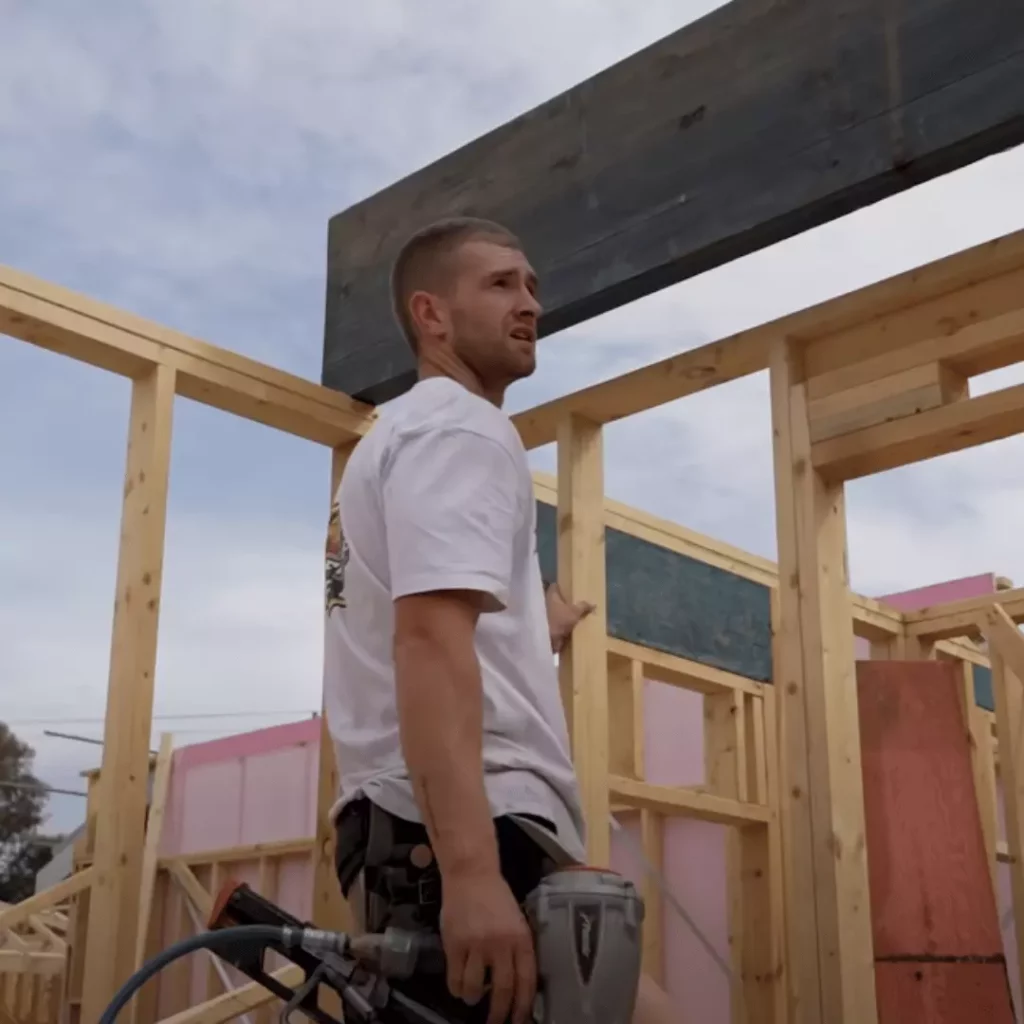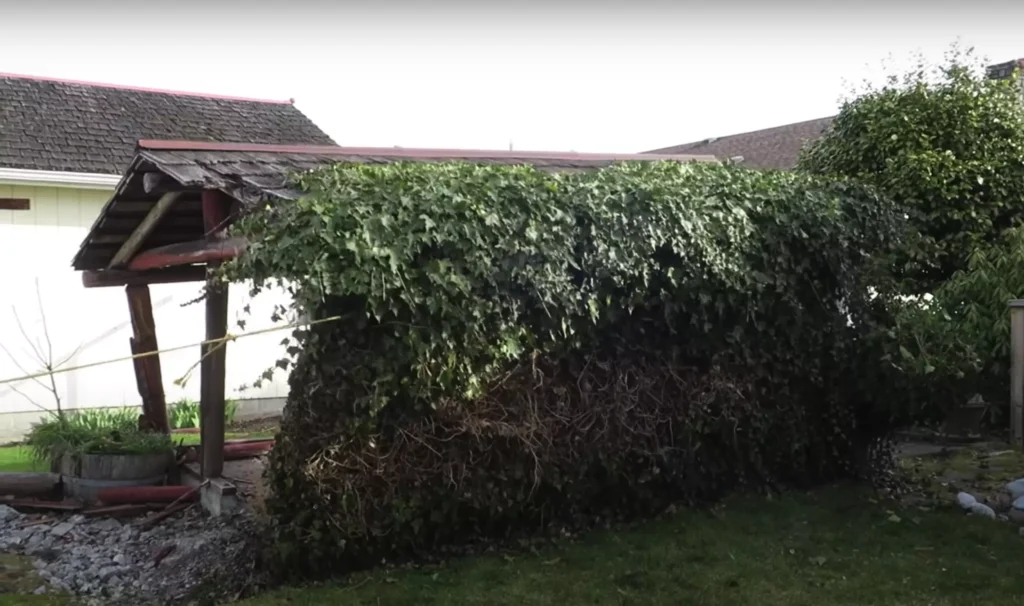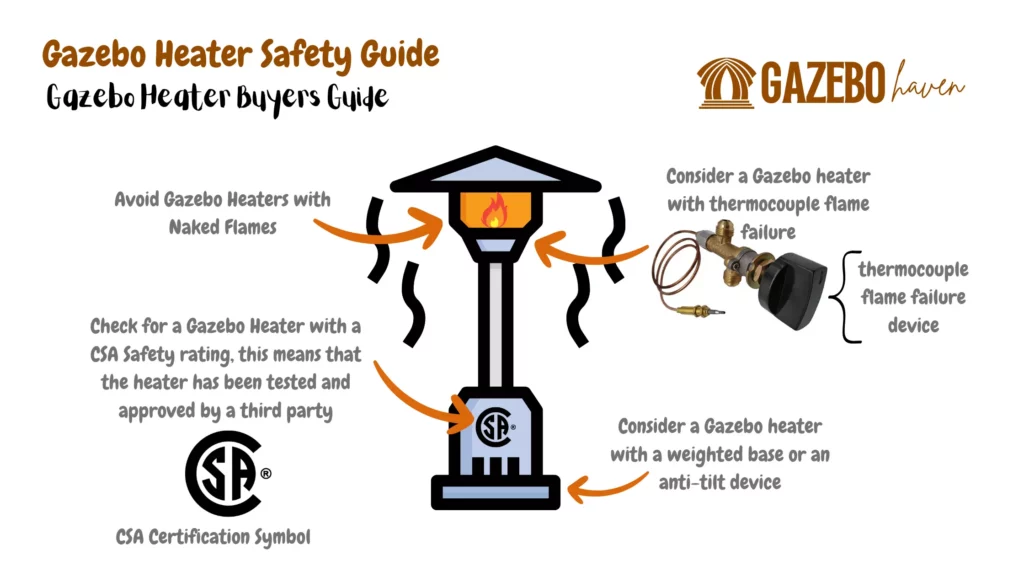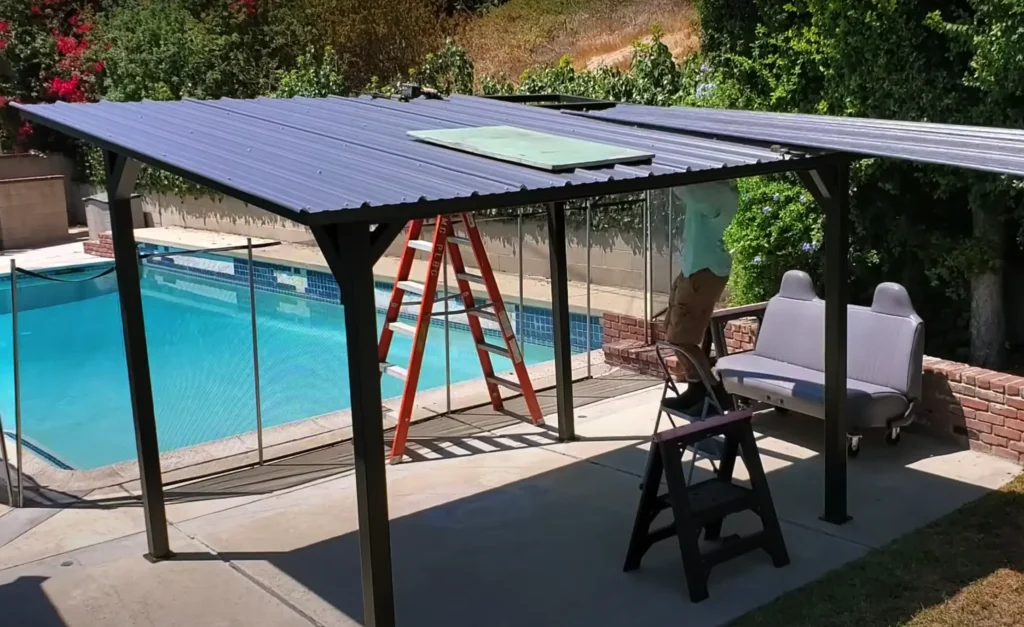We reviewed some of the best gazebo heaters that we are using in our gazebo to warm ourselves during chilly nights and also during the winter; after buying your heater based on our recommendations, you will need to put the gazebo heater in your gazebo, and lastly, you will need to secure your gazebo heater to prevent it from tipping and causing accidents.
In this article, we are going to help you avoid one of the most common accidents that we have experienced when using a gazebo heater, and that’s your gazebo heater tripping due to unstable and improperly positioned gazebo heaters, which can lead to gazebo accidents such as fires hazards, burns, and scalds, gas leaks when using gas heaters, electrical issues when using electrical heaters.
Gazebo heaters accidents we have experienced with our gazebo heaters are mainly due to wind-related accidents, improper storage, and inadequate clearance around our gazebo heaters.
In this safety guide to using your gazebo heater, we will explore effective safety methods that we have incorporated in our gazebo heater and gazebo to ensure that our gazebo heater doesn’t trip and remains stable and upright when in use and when stored, allowing to enjoy the warmth of your gazebo heater without having to worry about fire hazards and heater accidents.
In summary, this complete guide to using your gazebo heater helps you understand its stability and how to help it maintain its stability when in use and when in storage.
Some of the influential gazebo heater stability factors that we have incorporated include choosing the suitable gazebo heater placements, installing and assembling the gazebo heater, using gazebo heater stabilizing methods and accessories, and how to prevent your gazebo heater from being blown by the wind, we will also highlight gazebo heater storage and transportation guides to prevent gazebo heater accidents, and potential safety issues.
Is It Safe To Use An Outdoor Heater in a Gazebo?
Yes, it is safe to use an outdoor heater in a gazebo. We recommend choosing the right location to place your gazebo heater, ensuring the heater is well assembled before use, using stabilizing techniques and accessories such as weights to keep the heater balances and prevent tipping, and mitigate the effects of wind, and regularly maintaining and inspecting your gazebo heater, and lastly taking proper care and precautions when transporting and storing your gazebo heater.
How Do I Choose a Safe Outdoor Heater?
When it comes to choosing a gazebo heater, there are factors we recommend you consider to make sure it is safe to use on a gazebo. Below we will highlight some factors to consider when choosing a safe and reliable gazebo heater.
Gazebo Heater Design.
The design of the gazebo heater plays a significant role in ensuring the heater is safe for use in an outdoor setting; some of the stability features incorporated in a gazebo heater include the shape and structure of the gazebo heater, a well-designed gazebo heater will be able to balance on itself and also be in a state of equilibrium when placed as recommended by the manufacturer.
For freestanding gazebo and tabletop gazebo heaters, we recommend considering a sturdy foundation base with a low center of gravity to resist external forces that can cause the heater to trip easily. The base of the gazebo heater should be broad and sturdy; the base of the gazebo heater should also be more comprehensive than the post or pole of the heater, burner assembly, reflectors, control panel, ignitor, regulator, and other safety features added to the gazebo to help distribute the weight of the gazebo heater evenly.
For wall-mounted and ceiling-mounted heaters, we recommend looking for safety features such as locking mechanisms and covers, elevated positioning, contained design, position adjustments, and protected wiring and gas pipes and valves.
Gazebo Heater Weight.
The weight of the gazebo heater also plays a crucial role in supporting a gazebo heater; we recommend a heavy gazebo heater since heavier gazebo heaters are more stable and less likely to be toppled over by outdoor elements such as winds.
The weight of the gazebo foundation base should be heavier than the other gazebo heater parts; this also ensures that the weight of the top parts, such as the post or pole of the heater, burner assembly, reflectors, control panel, ignitor, regulator, and other safety features added to the gazebo weight is evenly distributed to the base of the heater.
For heaters such as freestanding gazebo heaters and tabletop gazebo heaters with additional weight plates or fillable reservoirs that will allow you to adjust the weight of the gazebo heater according to factors such as wind conditions and exposure.
And lastly, the height of the gazebo heart and its weight should be balanced to ensure the heater is in equilibrium and well-balanced to prevent tipping.
Gazebo Heater Construction Materials.
We also recommend checking your heater construction materials; the construction materials play a significant role in ensuring the stability of your gazebo heater; for freestanding gazebo heaters and tabletop gazebo heaters, we recommend choosing a heater made from stainless steel or cast durable aluminum and heavy to contribute the overall stability of the gazebo heater.
We recommend gazebo heaters made from stainless steel, powder-coated steel, cast aluminum, or cast iron; these materials can withstand high temperatures, corrosion from outdoor elements such as wind, rain, and temperature fluctuations.
Gazebo Heater Safety Features.
We also recommend buying a gazebo heater with built safety features such as tip-over switches or flame failure devices; these are mechanisms that will ensure that the heater can shut itself off if it’s accidentally knocked over or tripped by the wind.
Gazebo Heater Components.
We also recommend considering a gazebo heater with heat-resistant components; we recommend ensuring the manufacturer uses heat-resistant components in critical gazebo components, such as the burner assembly, reflector, and heat emitters.
We also recommend buying a gazebo heater with removable components that make it easy to maintain, inspect and replace; this is because over time, due to outdoor elements such as vibrations from the wind, dirt, contact with water or moisture, the heater parts can become loose or damaged, compromising the safety of the gazebo heater.
The heater components should be easy to clean elements such as dirt and debris, which can affect the functioning of the gazebo; it should also be easy to inspect the components for any loose connections.
How Do You Stabilize An Outdoor Heater?
You can stabilize an outdoor heater by choosing a safe heater placement surface, assembling the heater correctly, using stabilizing techniques, and accessories such as weights and anchors, using wind protection measures, and maintaining and inspecting your heater components to make sure the components are connected, well balanced and in equilibrium, taking proper care and precautions to store and transport your gazebo heater, and finally follow the manufacturer safety precautions.
We have explained in detail below how to stabilize an outdoor heater:
Where Should an Outdoor Heater Be Installed?
It would be best if you placed an outdoor heater on a stable, well-ventilated surface, sheltered away from weather elements such as winds and rain, and lastly, place the outdoor heater away from flammable objects such as curtains and furniture, gusty areas, and narrow or crowded spots.
Place Your Heater in a Stable Surface.
We recommend placing your outdoor heater on a stable and level surface for safety reasons; a solid and even surface will provide a solid foundation for your outdoor heater preventing it from wobbling or imbalance due to high winds; when choosing a stable and level surface; we recommend checking the weight of the heater to make sure the stable and level surface can support the weight of the heater.
For Freestanding Gazebo Heaters and Tabletop Gazebo heaters, we recommend placing them on the ground, countertops, shelves, tables, or heater mounting brackets that can handle the weight of the outdoor heater. You should avoid placing the outdoor heater on uneven surfaces, such as floor cushions, or flammable objects, such as gazebo floor lugs.
For a wall-mounted gazebo heater, you can mount the header on the gazebo post, which is flat and stable compared to mounting wall-mounted heaters on the gazebo wall; for ceiling-mounted gazebo heater, we recommend mounting the heater on the gazebo central hub, or the intermediate roof rafters which are mainly supported by short rafters/ jack rafters.
Install The Heater In A Well-Ventilated and Clear Space.
A gazebo should only be used in a well-ventilated and spacious outdoor space with airflow, airflow helps in heat distribution, and you should avoid placing outdoor heaters too close to the walls, gazebo décor and accessories, curtains, and nettings, or other flammable materials, plants, furniture or canopies.
Avoid Windy Areas.
We recommend looking for areas free from wind that, if strong enough, can tip your heater; if your gazebo is opened-walled, you can consider using a gazebo privacy wall or screen to block strong winds and rain.
It’s tough to shield your gazebo heater from winds on an opened walled gazebo, as winds tend to shift from one direction to another; that’s why we recommend looking for other types of heaters, such as ceiling-mounted heaters which are protected by the conical shape of the gazebo roof when mounted in the gazebo central hub.
Avoid Narrow and Crowded Spots.
Other spots we avoid placing a gazebo heater are narrow and high-trafficked spots, narrow spots don’t have enough airflow, and places elements such as walls, décor, and accessories are too close to the heater.
We also avoid high-trafficked areas of the gazebo, such as the entryway and the center of the gazebo, which can increase the risk of tipping or collision by pets on humans.
Proper Assembly of Outdoor Heater.
We recommend following manufacturer guidelines on the components assembly of your gazebo heater; Manufacturers’ instructions will provide you with the safety and efficient installation instructions and processes, including how the gazebo heater parts align with each other and their operations.
The essential steps that we follow when installing a gazebo heater are as follows:
Reading Manufacturer Instructions.
The first step is to read the manufacturer’s manual and installation instructions; this will help you understand the parts and tools you will need to install the heater in your gazebo; we also recommend reading the manufacturer’s manual and installation guide to help you note all the heater components and how they align with each other, you will also find safety precautions and any unique considerations of your gazebo heater that will help you in the installation process.
Preparing Your Gazebo.
After reading the gazebo heater manual, we recommend cleaning your gazebo, removing obstacles, and identifying the gazebo heater pointing points for maximum heat distribution.
Cleaning your gazebo will give you a clean working canvas that you can use without obstruction or tripping when working; it will also help you find the tools and components you will need quickly when installing your gazebo; cleaning your gazebo before working is one of the safety measures we take to ensure a smooth installation of a gazebo heater.
Gathering Installation Tools.
Some of the essential installation tools you will need to install wall-mounted and ceiling-mounted gazebo heaters include a ladder, or step tool, screwdriver, wrench, drill and drill bits, brackets, anchors and clips for securing your heater, safety glasses, and work gloves to protect yourself.
Depending on your heater type, you may require additional tools and equipment; for example, for a propane heater, you will need gas line fitting and connectors, a gas leak detector, a gas regulator, a propane tank, and gas pipes for a gas-powered gazebo heater, for electric heaters you will require tools such as Screwdriver, Pliers, Wire Cutter, Multimeter, Voltage Tester, Electrical Tape, Wire Nuts, Wire Fish Tape, Cable Ties, Fish Rods, Non-contact Voltage Detector, Wire Labels, Flashlight, Insulated Gloves, Circuit Breakers, Electrical Outlet.
Sorting Gazebo Heater Components.
After gathering all the tools you will need in the installation process, its time to lay out all the parts of your gazebo and confirm if they are all there and if there are no damaged parts; after confirming all the parts are available, its time to sort them into groups based on their type and stage required during the installation process.
Some of the parts of a gazebo heater that you will identify include a heater Base, Post, Burner, Reflectors, Control Panel, Igniter, Gas Valve, Safety Features, Canopy, Blades, Motor, Light Kit, Remote Control (if applicable), Wheels, and Handles. The parts may vary depending on the type of your gazebo heater and brand.
Assembling The Heater.
After identifying and sorting out the parts of the gazebo, it’s time for you to assemble it on the ground before mounting it on the spot you identified when preparing your gazebo.
We recommend reading and following the manufacturer’s heater assembly instructions and paying attention to the order of parts assembly, some brands are sensitive to the order of components assembly, and the sequential approach ensures that all parts are aligned and attached security based on manufacturers’ specifications.
Installation of The Heater.
After assembly of the heater on the ground, you need to test whether it is working as intended before mounting it; after testing, it’s time to mount or install the heater on the level and sturdy spots you identified when cleaning your gazebo.
For wall-mounted and ceiling-mounted gazebos, there will be brackets for mounting the heater to your gazebo roof or wall; you will also need to secure the heaters with hooks and clips to prevent the heater from swaying and being blown by the wind or other outdoor elements.
We recommend the installation of heaters on level and sturdy spots; the area for mounting your heater should be well-ventilated with enough space and away from high-traffic areas to prevent tipping or the gazebo heater from being blown by the wind.
Inspecting and Maintaining The Heater.
After assembly and installation of the heater, it’s time to inspect the installation, test the heater, and tighten connections after confirming that the heater is working correctly. To ensure proper assembly, secure attachments such as wires, pipes, and extension cords with hooks and clips, ensuring a secure and well-aligned installation.
How To Keep Your Patio Heater from Tipping Over
The process is still ongoing for Freestanding Gazebo Heater and Tabletop Gazebo heaters; you must stabilize the heater to prevent it from tipping and unnecessary movements. Some methods to stabilize the heater include using weights, sandbags, water weights, stands or brackets, and anchors.
How Do You Secure a Gazebo Heater From Wind?
One of the main challenges of using a heater in a gazebo is dealing with the effects of wind; wind can tip over your heater, reduce your gazebo heater heat output, uneven heat distribution, shorten heating range, flame instability, and accelerated fuel consumption.
To secure your gazebo heater from wind, you will need to position the heater in a sheltered spot away from the wind, use windbreakers such as gazebo privacy walls, solid curtains, and nettings, inspect electrical wires, and gas pipes for potential electrical faults and gas leaks, follow manufacturer instruction to assemble and install the gazebo heater safely.
How Do You Maintain a Gazebo Heater?
For optimal performance and safety of your gazebo heater, we recommend performing regular inspections and maintenance to identify and address any issues that can compromise the safety of your gazebo heater.
To maintain your gazebo heater, we recommend regular cleaning, inspecting the fuel lines and electrical cords, testing the ignition system and switches, checking for corrosions, inspecting the support base, mounting brackets and support hooks, clearing obstruction, and inspecting air ventilation.
How To Transport and Store a Gazebo Heater?
When transporting and storing your gazebo heater, we recommend following the manufacturer’s safety precautions; the gazebo heater is switched off and disconnected from the power source to prevent accidental fires and accidents.
To transport your gazebo heater, we recommend disassembling your gazebo into manageable parts by removing the top dome, detaching the reflector and burner assembly, and securing the components; you will also need to secure your gazebo heater for transport by securing the gazebo heater components, wrapping delicate parts, such as the reflector and the burner, and ensure the weight is evenly distributed to maintain balance.
To store your gazebo heater, you will need to choose a dry storage space away from external components such as rain, snow, and direct sunlight,
Gazebo Heater Safety.
A gazebo is one of the most delicate gazebo functional accessories that you can add to your gazebo, its functional and will help you keep warm during chilly nights and during the winter; however, you will need to follow the following essential safety features to promote a safe environment when using your gazebo heater.
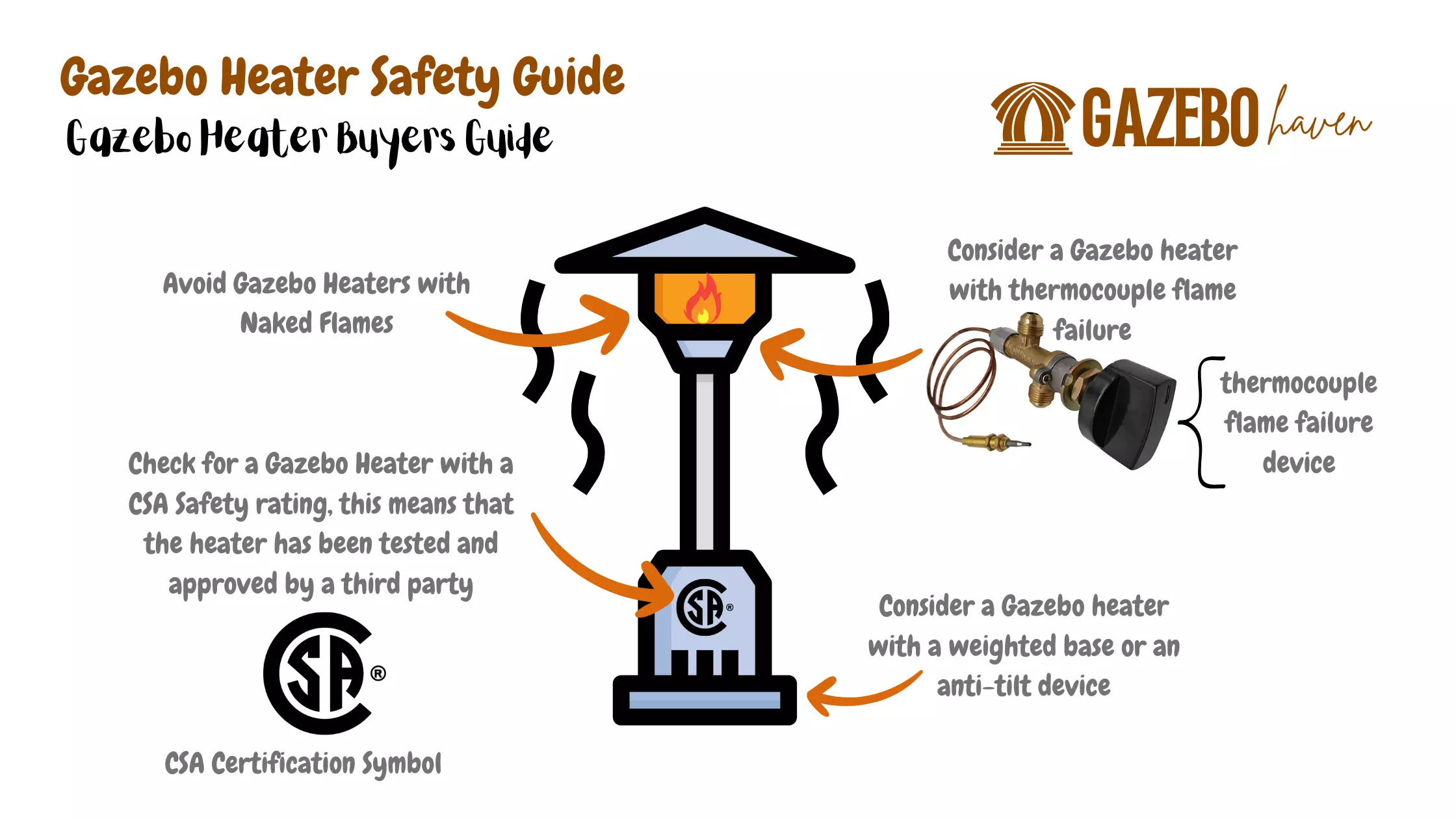
Preparing Your Gazebo.
We recommend making sure your gazebo is ready for a gazebo heater; some of the safety preparations you can undertake include precautionary measures such as cleaning your gazebo, maintaining adequate space between your gazebo heater and flammable gazebo parts, décor and accessories, ensure the gazebo heater is at a safe distance from human traffic and pets, and lastly ensure the heater is placed in a well-ventilated space.
Follow Manufacturer Safety and Installation instructions.
Gazebo heater manufacturers will provide you with safety and installation instructions that are tailored toward safety and seamless installations; the key reasons why you should follow manufacturers’ safety and installation include:
The gazebo heater user’s manual includes a proper and secure assembly of the gazebo heater, a connection of power sources, how to safely light and extinguish the gazebo heater, and adjusting the heat and safety measures.
Conduct Regular Maintenance and Inspections.
To ensure a safe and functional gazebo heater, we recommend conducting regular maintenance and inspection of your gazebo heater; some of the maintenance and safety inspections we recommend include cleaning the heater by removing outdoor elements such as dust, cobwebs, and debris to ensure proper functioning and prevent blockage of fuel to the burner, or heat emitter.
We also recommend inspecting your gazebo heater parts for loose or damaged parts that could compromise the functioning of your gazebo heater; some of the areas of focus include mounting brackets and hooks, which can become loose over time due to wind vibrations, for gas-powered heaters, we recommend regularly inspecting the gas hose, gas connectors, valves, and burners for any loose connections, cracks or rust.
How To Service a Gazebo Heater?
We recommend booking for professional servicing of your gazebo heater at least once a year or once after every six months after heavy use; a certified technician will conduct a thorough inspection, disassemble the heater components and check for loose, damaged, and compromised parts, replace them, and address any other potential issues with your gazebo heater.
Conclusions.
It’s essential to ensure you are safely using your gazebo heater to prevent accidents and fire risks; some of the safety measures we have discussed include understanding your gazebo stability, choosing the suitable gazebo heater placement locations, correctly assembling your heater, stabilizing your gazebo heater from winds using weights, brackets, and anchor accessories, protecting your gazebo from wind, maintaining and inspecting your gazebo heater, transporting and storing your gazebo heater, and lastly safety precautions you should follow when using your gazebo heater.
